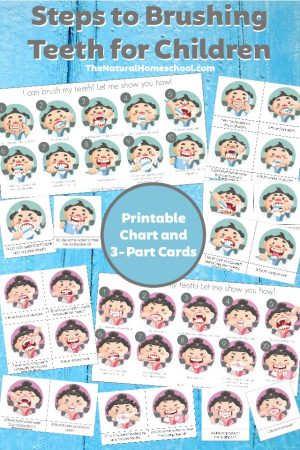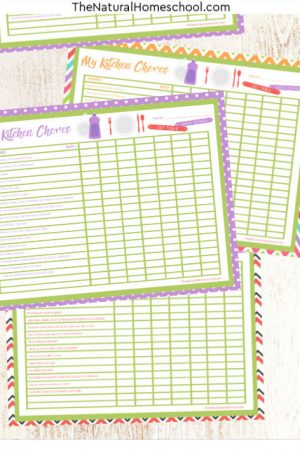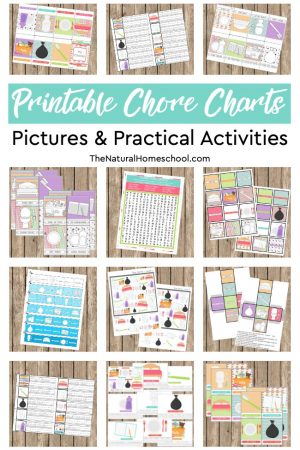One of the key elements of effective homeschooling is knowing how to focus on areas that traditional schooling might only reference. Instead of diving deep into important issues, theories are skimmed over, and although kids get a decent idea, there are still some knowledge gaps. When it comes to their well-being and healthy eating, these gaps aren’t beneficial and could cause a range of common health problems. So, how can you teach nutrition while homeschooling?

Practical Lessons
There is no better way to learn than by doing, and making a meal a day with your kids will show them how to combine ingredients that complement one another and create a healthy food option for dinner.
The sooner they learn the benefits of putting veggies with the good stuff (as well as the best ways to make veggies) they will be more comfortable adding it to their meals when they are old enough to cook for themselves. These lessons can also create a passion for cooking and encourage them to get more creative as they attempt different dishes from all over the world.
Show Variety
Kids often find one type of food they love and will not eat anything else. As much as eating the same thing every day is comfortable, it also doesn’t give them the broad range of nutrition options they need for a healthy lifestyle.
Showing them the benefits of variety by cooking different meals can change this. You can also use your homeschool classes to identify how different foods, such as red meat, white meat, and fish, offer different benefits that can help them grow big and healthy.

Identify Key Food Groups
The likes of carbs, protein, and fats are things your kids will hear as they grow up, but they may not know what they mean or why they are so important. Each of these food groups plays a crucial part in well-rounded nutrition, and knowing what each group does will help your kids understand why it’s so important and can encourage kids to seek out these food groups when making meals or even later in life when they go out to dinner with friends.
Suggest Alternatives
You know that it’s not always easy to get all the food groups in one meal, especially if your kids are younger and rely on you to make their meals. However, you can suggest alternatives they can turn to if they don’t have time to make a full meal themselves when they are old enough.
Showing them a high-quality supplement brand can give them a convenient solution for meal replacements, while multivitamins are also an ideal way for them to start their day and ensure they have all the nutrients they need to feel healthy and energized.

Nutritious, Delicious
Nutrition knowledge will help your children make many healthy eating choices so they can grow big and strong and establish a healthy diet that they can maintain for the rest of their life. This gives them the chance to learn all the essentials earlier than their peers, giving them a leg up and ensuring they avoid common health issues caused by unhealthy food.
You may also like:
Healthy Habits, Happy Moms & Families
Encouraging Self-Care For Healthy Habits
40+ Healthy Lunch Ideas for Kids {for Home or for Homeschool Co-op}
50+ Healthy Snack Ideas for Kids {for Home or for Homeschool Co-op}
Tips for Healthy Eating over the Holidays
Latest Posts
- Levelling Up Your Career
 Levelling up your career is a lot easier if you pay attention and follow these four easy steps.
Levelling up your career is a lot easier if you pay attention and follow these four easy steps. - Craft Activities for Kids ~ Paper Weaving Projects
 In this post, we are looking at some really fun paper weaving projects that your kids will find a lot of fun!
In this post, we are looking at some really fun paper weaving projects that your kids will find a lot of fun! - Inspired by Montessori Curriculum for Toddlers PDF (225 pages)
 Let’s be completely honest for a minute, guys, in regards to the best Montessori curriculum for toddlers PDF. I think we can all agree that homeschooling a toddler or having a toddler at home while we homeschool our older kids can be as easy or as daunting as you want…
Let’s be completely honest for a minute, guys, in regards to the best Montessori curriculum for toddlers PDF. I think we can all agree that homeschooling a toddler or having a toddler at home while we homeschool our older kids can be as easy or as daunting as you want… - Online Learning Takes a Stand Against Traditional Educational Methods
 Online Learning Takes a Stand Against Traditional Educational Methods
Online Learning Takes a Stand Against Traditional Educational Methods - The Benefits of Involving Children in Household Tasks
 Household tasks can bring many benefits to your children and family as a whole. In today’s fast-paced world, teaching children responsibility and essential life skills is more important than ever.
Household tasks can bring many benefits to your children and family as a whole. In today’s fast-paced world, teaching children responsibility and essential life skills is more important than ever.







Leave a Reply